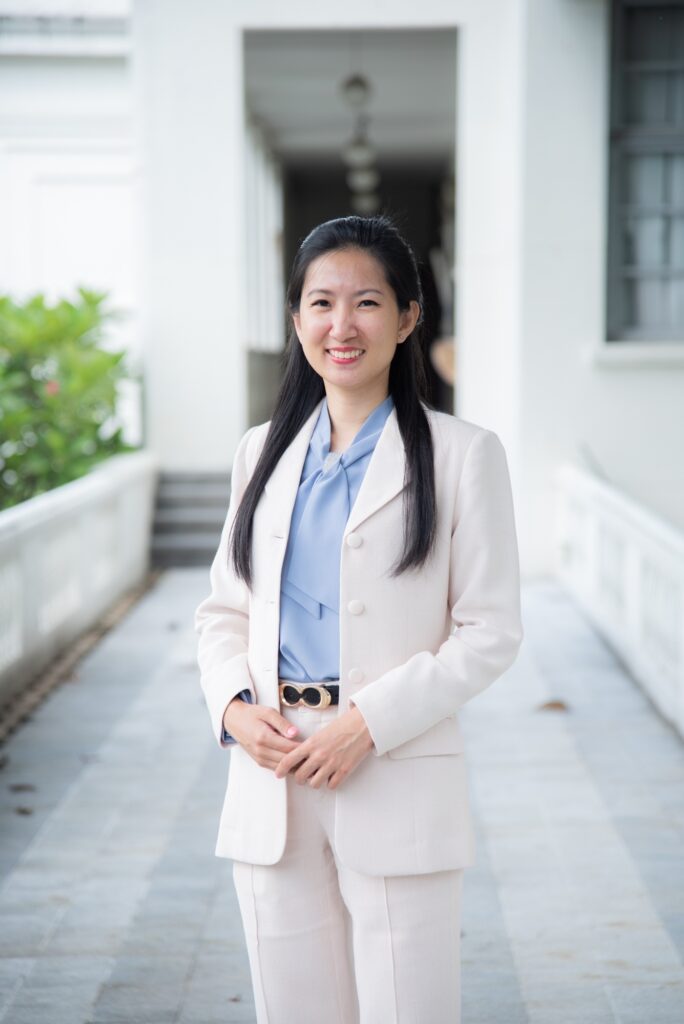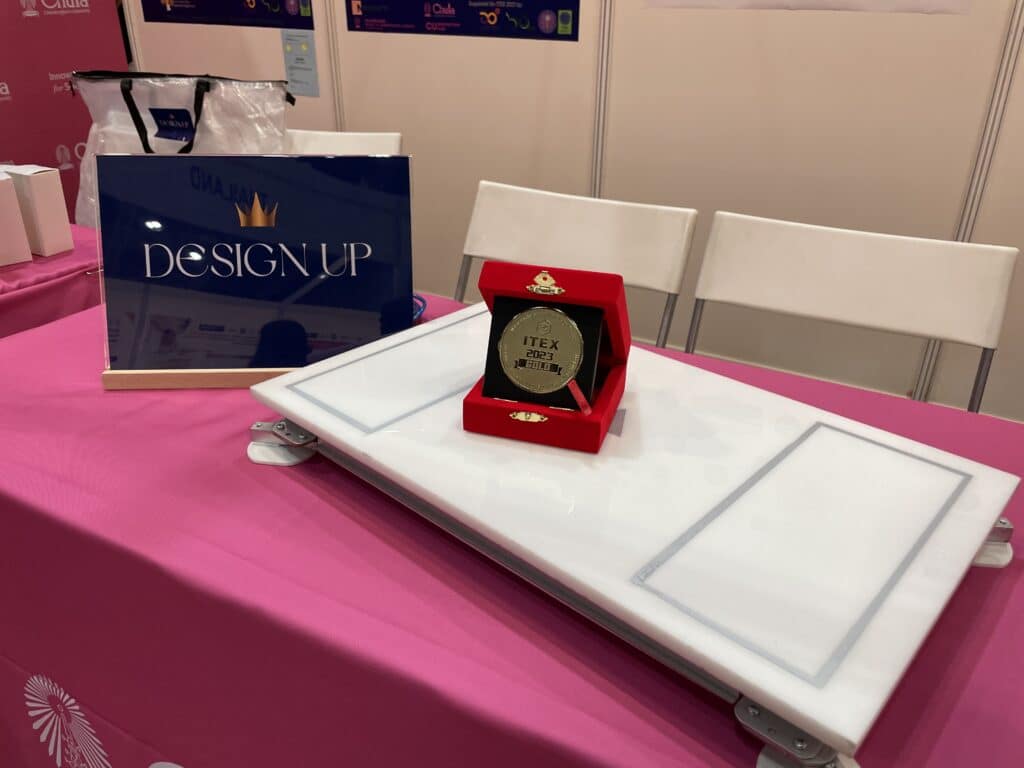Chula Engineering lecturer’s innovation “The Balance Assessment Device”—gold medal winner at ITEX 2023, Malaysia, and recipient of World Invention Intellectual Property Associations’ (WIIPA) Special Award (Gold Medal)—checks body balance and balance loss for behavior changes and fall prevention to promote fall risk awareness and knowledge.

International School of Engineering (ISE),
Faculty of Engineering, Chulalongkorn University
Newswise — Standing in public buses, Chatchanee Pakavatsoontorn, an adjunct lecturer in the International School of Engineering (ISE), Faculty of Engineering, Chulalongkorn University, has found herself losing her balance occasionally.

“Is this balance loss normal? How can I solve this to have a better balance?” Chatchanee’s search for the answer to this question has led to her innovation, “The Balance Assessment Device,” which enables everyone to assess their balance simply by stepping onto the device. With support from the Chula Spin-off Club, this innovation has won the gold medal at the 34th International Invention, Innovation & Technology Exhibition (ITEX 2023) in addition to the World Invention Intellectual Property Associations’ (WIIPA) Special Award (Gold Medal) at the same event in Kuala Lumpur, Malaysia.
“This innovation originated from the fact that I found myself frequently losing balance on public buses. Researching to find a solution, I found that a personal balance assessment device didn’t exist. This has led to this innovation which would help us train our body or adjust our behavior.”
Chatchanee aims this for such medical purposes as screening, preliminary health assessment, balance analysis for physical therapy, and exercise planning. Besides, this device can be used for personality training for certain professions.
Poor balance and ataxia: Invisible illness
Ataxia is a balance symptom found in every physical movement. An unbalanced walking causes instability and can lead to a deadly fall.
Poor balance is due to many causes, including heredity, disease, injury, lifestyle, and physical condition, especially for muscles, joints, the sensory nervous system, signal transmission, and the brain system.
“Our ears affect our balance, and irregularity in one ear can make us lose our balance while moving. Our lifestyles, especially for those in the professions that require muscular strength, also affect our balance,” Chatchanee cites a few possible causes for poor balance.
“With the naked eye, poor balance can be roughly detected. Usually, we’re only aware of our poor balance when we stagger and fall. A device that analyzes our balance can then alert us so that we can adjust our behavior and prevent any fall.”
Multiple balance analyses by a single device
A Deep Tech innovation, the Balance Assessment Device is compact, lightweight, and portable, with only two main components, namely a standing platform and a USB cord connecting it to a computer, tablet, or mobile phone for display of analysis results.
“Apart from basic data such as weight and Body Mass Index (BMI), this device can also measure our balance area and distance. With such data, we can figure out if the way we lose our balance while, for example, standing on public transport like a bus, train, boat, standing, or walking in daily life is considered normal in comparison with others of the same sex and age group. Then, we can analyze whether we need to adjust our behavior accordingly,” explains Chatchanee.
This device is user-friendly. One can simply connect the USB cord to a tablet, a mobile phone, or a computer and then step onto the platform like step procedures that of a weight scale. The balance analysis result will then be displayed in real-time with Microsoft Excel.
Anyone can assess their balance
The Balance Assessment Device is not only for elderly people but also anyone older than four (or 10 kilograms and more), including athletes, exercise people, and those who want to develop their personality. All can benefit from this innovation differently according to their age groups and needs.
Athletes and Active People
The Balance Assessment Device can be used to analyze an individual’s balance in sports clubs or fitness centers for health enthusiasts, those who dance or do aerobics to strengthen their legs, people who work with machinery like factory workers, people who work in high places like construction workers, as well as to assess child development. Experts can then suggest training routine and behavior change accordingly.
It’s similar to step procedures on weight scales already found in fitness centers, but it can check your balance without the need to attach sensors in the body or wear a special suit.”
Personality enhancement for certain professions
such as flight attendants, masters of ceremonies (MCs), newscasters, and actors.
Balance assessment for medical purposes
Having put the Balance Assessment Device into practice, Chatchanee notes, “We’ve tested in three hospitals, and the doctors have positive responses, especially for physicians and pediatricians who would like to have it for patient screening as it can assess balance, and balance area, in real-time using any device with Microsoft Excel capability without the need to install any additional software. It can help lighten the medical personnel’s load and be easily accessed by patients who live farther away from the hospitals.”
Besides, this innovation is for autistic and Attention Deficit/ Hyperactivity Disorder (ADHD) people as well as concussion patients, as the results from their balance analyses can be applied in the planning rehabilitation process.
“Autistic and ADHD people have balance problems, and so we need to help them regain their balance and redevelop their attention.”
Apart from The Balance Assessment Device, Chatchanee has developed other devices for balance, such as her walking stick innovation “Smart Devices for People: Self Balancing Stick” and “Semisitting Vehicle”.
“Most elderly people don’t like using the walking stick: they believe it would weaken them. The walking stick considerably helps those with balance problems, and that’s why we’ve developed the Smart Flow walking stick innovation and Semisitting Vehicle innovation for them.” Moreover, we have developed semi-sitting vehicles to serve the aging society as an alternative mode of transportation and logistics in narrow spaces.
Good balance, good health
As for the future, Chatchanee plans to further develop the device so that it can also analyze data for the visual system, central nervous system (CNS), sensory nervous system, auditory system, and other systems that either connect to or affect balance.
“This innovation is a simple tool that can assist the doctor in assessing fall risks among elderly people, encouraging behavioral changes, promoting fall prevention, and raising fall risk awareness and knowledge. Anyone can use it to check their balance and status. It can help lighten the medical personnel’s load and create public well-being.”
If you’re interested in the Balance Assessment Device, please get in touch with us at [email protected], Facebook Page: Design Up, LINE Official Account: Design Up (https://lin.ee/UsxvGgv).




